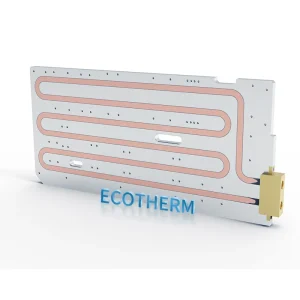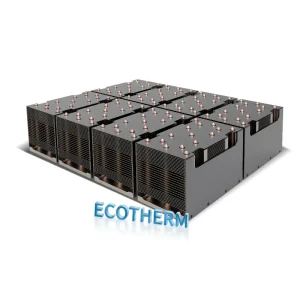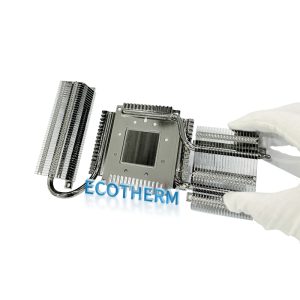Why Data Centers Cautiously Use Aluminum Cold Plates: An Analysis of Corrosion and AI Cooling Demands
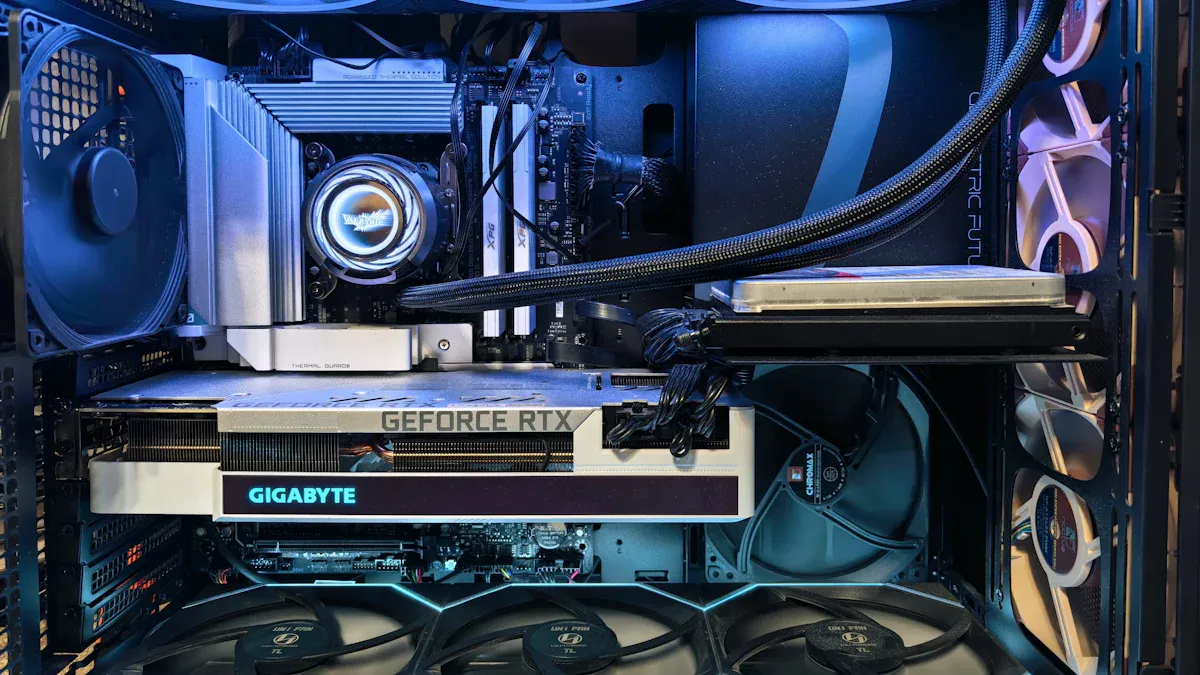
You may ask why data centers do not use aluminum cold plates much. Aluminum cold plates are popular in power electronics. The main reason is risk. Aluminum can rust fast if the coolant’s pH gets too low. It can also rust if you do not test the coolant every year. In systems with different metals, aluminum can break down. This happens when it touches stronger metals like copper and there is water. Pitting corrosion makes tiny holes in the aluminum. These holes can get bigger quickly, especially when it is warm and wet. If this happens, airflow can stop. Fixing these problems can cost a lot of money. AI hardware makes more heat than before. Data centers need cooling systems that last long and work well under stress.
Key Takeaways
- Data centers use copper cold plates more than aluminum. Copper moves heat better and does not rust as fast. Aluminum can rust quickly if the coolant’s pH is wrong. This can cause expensive fixes. Copper cold plates last longer and need less fixing. This makes them good for strong servers. Aluminum systems need regular checks to stop rust and keep working well. Picking the right coolant is very important. Deionized water with special chemicals works best for cold plates. AI servers make a lot of heat. They need strong cooling that works in tough places. Knowing how materials are different helps people choose cooling systems. New materials might make aluminum work better in the future. For now, copper is still the safer pick.
Aluminum Cold Plates Overview
Basics of Cold Plate Cooling
Cold plate liquid cooling helps control heat from strong chips. The chip sits right on the cold plate. The cold plate pulls heat away by conduction. Inside, coolant moves through small channels. The coolant grabs the heat by convection. The hot coolant goes to a heat exchanger. There, it lets go of the heat and cools down. Then, the coolant comes back to the cold plate.
This keeps chips cool, even when they work hard for a long time.
- The chip touches the cold plate.
- Heat moves into the plate by conduction.
- Coolant flows in channels and takes heat away.
- The hot coolant goes to a heat exchanger and cools down.
Industry Comparison
Different industries use different cold plate materials. Power electronics often use aluminum cold plates. They usually use glycol solution as coolant. Aluminum works well because the area is controlled and costs less. Data Centers mostly use copper cold plates. Copper works better and lasts longer. This is important for servers that run all the time.
| Factors | Power Electronics (Aluminum) | Data Centers (Copper) |
|---|---|---|
| Typical Coolant | Glycol solution | Water or glycol with inhibitors |
| Main Material | Aluminum | Copper |
| Performance Needs | Moderate | High |
| Cost Sensitivity | High | Moderate |
| Corrosion Risk | Managed with inhibitors | Naturally low |
Why Choose Aluminum?
Some industries pick aluminum for cold plates for good reasons:
- Aluminum is lighter than copper. This helps if you need to move things often.
- Aluminum costs less. It is cheaper and easier to make into shapes.
- Lighter parts mean shipping costs less.
| Advantage | Aluminum | Copper |
|---|---|---|
| Density | Lower, good for portability | Higher, adds weight |
| Weight | Lighter, easier to handle | Heavier, harder to move |
| Cost | More affordable | More expensive |
| Shipping | Less costly | More costly |
Aluminum saves money and weight, so many engineers like it. But Data Centers still pick copper. Copper lasts longer and works better in tough places.
Copper vs. Aluminum in Data Centers
When you look at cooling in Data Centers, there is a clear winner. Most engineers use copper cold plates, not aluminum. This is because servers have special needs and the environment is tough.
Copper is better for a few reasons. First, copper has much higher thermal conductivity than aluminum. This means copper moves heat away from chips faster. Servers doing AI work make a lot of heat. Copper helps keep chips cool and safe.
Second, copper does not corrode as easily as aluminum. You do not need to worry much about rust or pitting. This makes copper safer for long-term use. You want your cooling system to last for years and work well.
Aluminum has some good sides too. It is lighter and costs less money. Some other industries use aluminum cold plates. They care more about weight and price than long-term use. In Data Centers, people care most about reliability and performance.
Let’s look at a simple table to compare copper and aluminum:
| Feature | Copper Cold Plate | Aluminum Cold Plate |
|---|---|---|
| Thermal Conductivity | Very high | Moderate |
| Corrosion Resistance | Excellent | Needs special care |
| Weight | Heavy | Light |
| Cost | Higher | Lower |
| Lifespan in Data Centers | Long-lasting | Shorter if not managed |
| Maintenance | Less frequent | Needs more attention |
Tip: If you want your servers to work well for years, copper cold plates are a good choice. You will spend less time fixing problems and more time working.
You should also think about how the cold plate is made. Data Centers often use microchannel designs with thin fins. These small parts can corrode fast if you use aluminum. Copper lasts longer, even in these tiny spaces.
Another thing to think about is the coolant. Copper works with many coolants, even without lots of special chemicals. Aluminum needs coolants with strong inhibitors to stop corrosion. If you forget a check or the coolant changes, aluminum can break down quickly.
Corrosion Bottleneck

Material Stability
It is important to know how metals act in cooling systems. Both aluminum and copper can corrode, but not in the same way. Aluminum is more likely to have problems with its surroundings. If you use aluminum cold plates, you need to watch for two main kinds of corrosion:
- Pitting corrosion: Tiny holes can show up in the metal. These holes get bigger fast if the coolant has chlorides or the pH is wrong.
- Galvanic corrosion: This happens when aluminum touches another metal, like copper, in liquid. Aluminum will rust faster because it is not as strong as copper.
You can lower the chance of corrosion by keeping the coolant’s pH between 4.0 and 9.0. It helps to talk to experts who know how to stop corrosion. Good care and regular checks help aluminum cold plates last longer.
Corrosion Test Data
You can see how aluminum and copper are different by looking at test results. The ASTM D1384 test shows how much metal is lost after being in coolant for a while. Here is what the test found:
| Material | Weight Loss (g) |
|---|---|
| Copper | -0.78 |
| Cast Aluminum | -3.92 |
Copper loses less weight than aluminum. This means copper does not corrode as much in most coolants. If you use aluminum, you will lose more metal over time. This can make the cold plate weaker and hurt cooling, which is bad for Data Centers.
Coolant Impact
The kind of coolant you use changes how fast aluminum rusts. Some coolants have chemicals called inhibitors. These slow down corrosion. Not all inhibitors work the same way. Here is a table that shows how different inhibitors affect aluminum:
| Inhibitor Type | Description | Effect on Aluminum Corrosion |
|---|---|---|
| Organic | Guanidine, citrates, thiocyanates, etc. | Some help, some do not |
| Inorganic | Sulfates, phosphates, silicates, etc. | Often work well, but some can make gel in antifreeze |
| Stabilizers | Amino-siloxanes, carboxy siloxanes | Stop gel and help stop corrosion |
You need to pick the right inhibitor for your system. If you pick the wrong one, you might get gel or not enough protection. Always check your coolant and change it if you need to. This helps your aluminum cold plates last longer.
Note: Even with good inhibitors, aluminum can still lose metal over time. You should plan to check and take care of your system often to stop problems.
Long-Term Effects
When you look at cooling systems over many years, you see that corrosion does not stop after the first few months. It keeps working on the metal, even if you use good inhibitors. This is a big problem for aluminum cold plates, especially in Data Centers.
Aluminum fins inside microchannel cold plates start out very thin. Many fins measure only 0.2 to 0.3 millimeters thick. Over five years, even a small corrosion rate can eat away a lot of metal. If you lose just 10 micrometers of aluminum each year, you lose up to 50 micrometers in five years. That is a big part of the fin’s thickness.
If the fins get too thin, they can break or stop moving heat well. This makes your cooling system less effective.
Here is what can happen over time:
- Fins lose thickness and become weak.
- The space between fins gets bigger, which changes how coolant flows.
- Heat does not move away from chips as fast.
- The system’s thermal resistance goes up.
- Chips can get too hot and slow down.
You can see the difference in a simple table:
| Years in Use | Copper Fin Thickness (%) | Aluminum Fin Thickness (%) | Thermal Resistance Increase (%) |
|---|---|---|---|
| 0 | 100 | 100 | 0 |
| 5 | ~90 | ~50 | 10 (Copper) / 76 (Aluminum) |
If you use copper, the fins stay strong. The cooling system works almost as well as when it was new. If you use aluminum, the fins can lose half their thickness. The system may not cool your chips enough after a few years.
You also need to think about maintenance. If you use aluminum cold plates, you must check them often. You may need to replace them sooner than copper plates. This means more work and higher costs over time.
Tip: Always plan for the long-term when you choose materials for cooling in Data Centers. A system that works well today may not last if corrosion eats away at the metal year after year.
Data Centers: Corrosion Impact
Microchannel Design
You often see microchannel cold plates in data centers. These cold plates use many thin fins and tiny channels. The fins can be as thin as 0.2 millimeters. The channels between them are also very small. This design helps move heat away from chips quickly. The coolant flows through these channels and picks up heat from the fins. When the fins are thin, they can cool chips better. However, thin fins also mean that even a little corrosion can cause big problems. If the fins lose thickness, they may not move heat as well. You need to pay close attention to the design if you want your cooling system to last.
Lifespan Needs
You want your cooling system to last a long time. In data centers, cold plate systems often need to work for many years. Most liquid cold plate systems have a lifespan of 7 to 15 years. This is longer than many air cooling systems. You expect your servers to run without trouble for a long time. If the cooling system fails, your servers can overheat. This can cause downtime or even damage your hardware. You need to choose materials and designs that can handle years of use without losing performance.
- Liquid cold plate systems usually last 7 to 15 years.
- Long lifespan is important for data center reliability.
- Cooling failures can lead to server problems.
Five-Year Simulation
Let’s look at what happens to cold plates after five years of use. Imagine you have two cold plates. One is made of copper. The other is made of aluminum. Both have fins that are 0.2 millimeters thick. Over five years, corrosion slowly eats away at the fins.
For copper, the fins stay strong. After five years, copper fins might lose only about 10% of their thickness. The cooling system still works well. The increase in thermal resistance is small, usually around 10%. Your servers stay cool and safe.
For aluminum, the story is different. Aluminum fins can lose up to half their thickness in five years. The fins become weak and thin. The thermal resistance can go up by more than 50%. This means the cold plate cannot move heat away from the chip as well. Your chips may get too hot. You might see slowdowns or even need to replace the cold plate sooner than planned.
Regular checks are important. Corrosion can cause leaks or lower performance. You need to inspect your system often to keep it safe.
You also face other challenges with aluminum cold plates. Mixed-metal systems can cause galvanic corrosion. This happens when aluminum touches another metal, like copper, in the presence of coolant. Aluminum can dissolve faster in these cases. You need to manage the chemicals in your coolant carefully. If you do not, you risk leaks and damage.
- Complex cooling systems need careful chemical management.
- Corrosion can hurt performance and safety.
- Leaks are a big concern.
- Regular inspections help keep your system working well.
- Galvanic corrosion can happen in mixed-metal systems.
You must think about these risks when you choose materials for your data center cooling system. A strong design and good maintenance help you avoid problems and keep your servers running smoothly.
Performance Loss
You want your servers to run fast and stay cool. When corrosion attacks the cold plate, you lose some of that cooling power. This problem grows over time, especially if you use aluminum cold plates in microchannel designs.
Corrosion eats away at the thin fins inside the cold plate. As the fins get thinner, they cannot move heat away from the chip as well. The thermal resistance goes up. This means the chip gets hotter, even if the cooling system works as it should.
You can see the effects of performance loss in several ways:
- The chip temperature rises faster during heavy workloads.
- The server may slow down to protect itself from overheating.
- You might see more system errors or even shutdowns.
- The cooling system uses more energy to try to keep up.
Here is a table that shows what happens over five years:
| Material | Fin Thickness After 5 Years | Thermal Resistance Increase | Risk of Overheating |
|---|---|---|---|
| Copper | ~90% of original | 10-15% | Low |
| Aluminum | ~50% of original | 56-76% | High |
If you use copper, you keep most of your cooling power. If you use aluminum, you lose a lot of it. The chip may run too hot, which can cause it to slow down or even fail.
You also face more maintenance. You need to check the system more often. You may need to replace the cold plate sooner than planned. This adds cost and can cause downtime.
Note: In Data Centers, even a small loss in cooling performance can lead to big problems. You want to keep your servers running at top speed. Choosing the right material for your cold plate helps you avoid these risks.
AI Cooling Demands
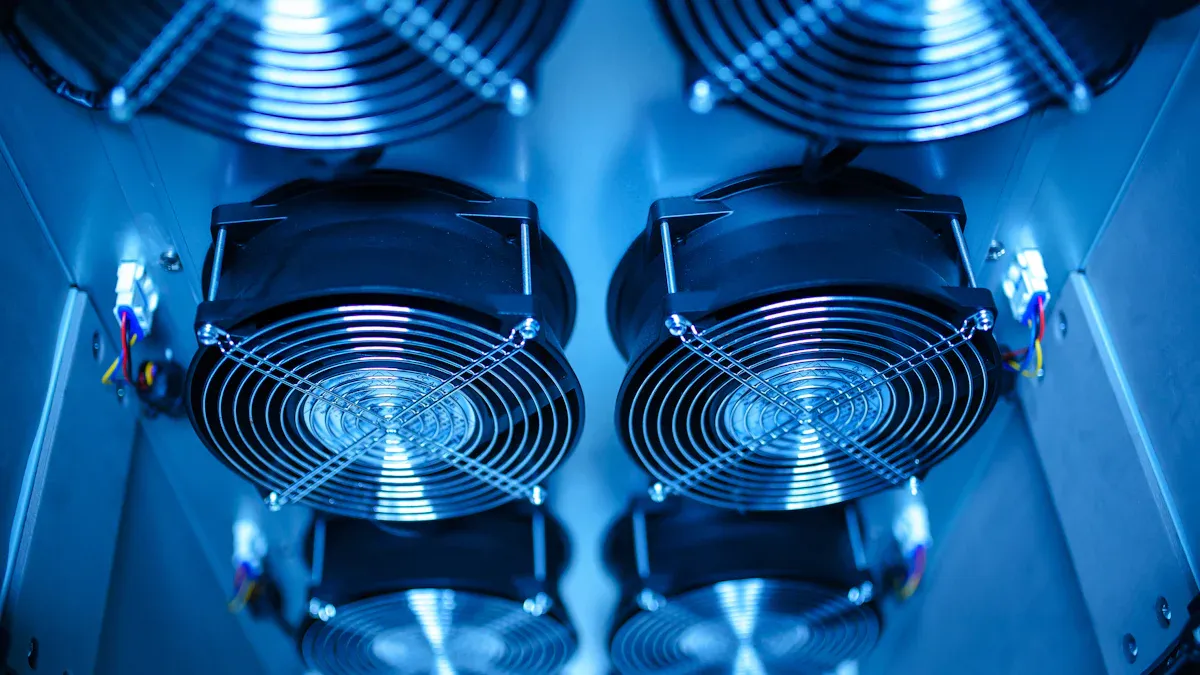
High Heat Flux
AI servers and switches create much more heat than older systems. You need to manage this heat to keep your equipment safe. In the past, a typical server rack produced about 1.5 kW of heat. Today, average server rack density has jumped to 12 kW. Many modern racks now reach 30-50 kW, and some cutting-edge designs go even higher. Future racks may exceed 100 kW.
Here is a table showing how heat flux density has changed:
| Heat Flux Density (kW) | Description |
|---|---|
| 5-10 | Traditional server racks |
| 12 | Average server rack density |
| 30-50 | Current rack power density |
| 50-100 | New AI data center designs |
| 200 | Cutting-edge facilities |
You can see that AI hardware pushes heat levels much higher than before. This means you need cooling systems that can handle these extreme conditions. Air cooling often cannot keep up. Liquid cooling, especially with cold plates, is now a must for many Data Centers.
Thermal Margin
Thermal margin is the small gap between the chip’s safe temperature and its maximum limit. AI chips run hot and have very little room for error. If the cooling system does not work well, the chip can overheat quickly.
Copper cold plates help you keep this margin safe. Copper moves heat away from the chip faster than aluminum. This is because copper has much higher thermal conductivity. When you use copper, you lower the risk of the chip reaching its limit.
Liquid cooling with copper also helps you save energy. It works better than air cooling, especially when heat levels are high. You get more reliable performance and protect your hardware from damage.
Tip: Always check your cooling system’s thermal margin. A small margin means you need the best materials and design.
Reliability
Reliability is key for AI workloads. You want your servers to run all day, every day, without problems. If your cooling system fails, your servers can slow down or even shut off.
Copper cold plates give you strong, long-lasting performance. They resist corrosion and keep working well for years. Aluminum, on the other hand, can corrode faster. If you skip coolant checks or use the wrong water, corrosion can start quietly. You might not notice until your system fails. For example, using tap water in an emergency once led to $200,000 in corroded cold plates in just six months. Skipping annual coolant tests can also cause pH to drop, leading to pits in aluminum parts. These problems often show up only after a failure.
You need to trust your cooling system, especially with AI hardware. Choosing the right materials and keeping up with maintenance helps you avoid costly downtime.
Material Choice
When you pick a cold plate for AI servers, your choice matters. It affects how well your system cools and how long it lasts. It also changes how much you spend. Copper and aluminum are the main options. Both have good and bad sides.
Copper takes heat away from chips very fast. This keeps your AI hardware cool, even when it works hard. Copper does not rust as easily as aluminum. You do not have to worry much about rust or pitting. Your cooling system will last longer. You will not need to fix it as often.
Aluminum is lighter than copper. It also costs less money. You can save on shipping and putting it in place. Some engineers like aluminum for these reasons. But aluminum does not move heat as well as copper. It needs special care to stop it from rusting. If you skip checking the coolant or use the wrong chemicals, aluminum can get damaged. Thin fins in microchannel cold plates can get weak fast. You might have to change aluminum plates sooner.
Here is a table to help you see the differences:
| Feature | Copper Cold Plate | Aluminum Cold Plate |
|---|---|---|
| Thermal Conductivity | High | Moderate |
| Corrosion Resistance | Strong | Needs inhibitors |
| Weight | Heavy | Light |
| Cost | Higher | Lower |
| Lifespan | Long | Shorter if not managed |
| Maintenance | Less frequent | More frequent |
Tip: If you want your AI servers to work well for a long time, copper cold plates are a better pick.
Think about the Data Center environment too. AI jobs make chips work very hard. The cooling system must keep up with the heat. Copper cold plates help keep chips at safe temperatures. This stops overheating and slowdowns.
Aluminum cold plates can work in some places. You need to check the coolant often and take care of the system. If you use aluminum, plan to do more checks. Watch for rust or damage. Change the plates before they break.
When you choose a material, think about what you need most. If you want the best cooling and long life, pick copper. If you need to save weight and money, aluminum might work. But you will have to accept more risk.
Remember: Picking the right material keeps your AI hardware safe and your Data Center working well.
Mitigation and Best Practices
Monitoring Protocols
You can keep your cooling system safe with good checks. Regular checks help you find problems early. There are a few ways to watch for corrosion and check performance:
- Put corrosion coupons in your system. These are small metal pieces you weigh before and after use. They show how much metal is lost.
- Use corrosion rate meters. These tools tell you how fast corrosion is happening right now.
- Set up test heat exchangers. These small units let you see how your system works in real life.
- Try the BETZ MonitAll® device. This tool measures both corrosion and buildup when heat is moving.
Tip: Checking your system often helps you find problems early and keeps things working well.
Coolant Selection
Picking the right coolant is very important for your cold plates. The coolant must work with your system and stop corrosion. You want a fluid that takes away heat fast and keeps your equipment safe.
| Coolant Type | pH Range | Corrosion Inhibitors |
|---|---|---|
| Glycol-based | 8-10 | Silicate, Phosphate |
| Deionized Water-based | N/A | Anti-corrosion, Anti-microbial |
Pick a heat transfer fluid that fits your system’s needs. Make sure it gives strong protection against corrosion. Many experts say to use deionized water with anti-corrosion and anti-microbial chemicals. This coolant has high specific heat, so it removes heat from chips well.
- Always check if your coolant works with the metals in your system.
- Look for coolants that stop both corrosion and germs.
- Change your coolant on a set schedule to keep your system healthy.
Note: The right coolant helps your cold plates last much longer.
Material Pairing
You can lower the chance of galvanic corrosion by picking the right metals. Galvanic corrosion happens when two different metals touch in liquid. One metal can rust faster than the other.
- Pick metals with similar electrochemical properties. This lowers the risk of corrosion.
- Use metals close together on the galvanic series. The galvanic series shows which metals rust faster.
- Always think about where your system will be used. Some places make corrosion more likely.
Choosing the right materials is one of the best ways to stop problems. If you must use different metals, keep them close on the galvanic series. This easy step helps your cooling system last longer.
Remember: Smart material choices protect your equipment and keep your data center strong.
Maintenance
You need a strong maintenance plan to keep your cooling system working well. Good maintenance helps you catch problems early and avoid costly downtime. When you use aluminum cold plates, you must pay even more attention to regular care.
Why Maintenance Matters
Aluminum cold plates can lose performance if you skip checks. Corrosion can start quietly and grow over time. If you do not act fast, you may face leaks, weak fins, or even system failure. You protect your investment by following a set schedule for maintenance.
Key Maintenance Tasks
You can use this checklist to keep your system in top shape:
- Inspect Cold Plates Regularly
- Look for signs of corrosion, pitting, or discoloration.
- Check for leaks around fittings and joints.
- Test Coolant Quality
- Measure pH and check for debris or cloudiness.
- Replace coolant if it falls outside the safe range.
- Clean System Components
- Flush the system to remove buildup or particles.
- Use only approved cleaning agents.
- Monitor Flow Rates
- Make sure coolant flows at the right speed.
- Low flow can mean blockages or pump issues.
- Check for Galvanic Corrosion
- Inspect areas where different metals touch.
- Add protective coatings if needed.
Tip: Set reminders for each task. Consistent checks help you spot small issues before they become big problems.
Maintenance Schedule Example
| Task | Frequency |
|---|---|
| Visual Inspection | Monthly |
| Coolant Testing | Every 3 months |
| System Flushing | Every 6 months |
| Flow Rate Check | Monthly |
| Full System Audit | Yearly |
You should keep detailed records of all maintenance activities. Write down what you find and what you fix. This history helps you track trends and plan for future upgrades.
Preventive Actions
You can prevent many problems by acting early. Change coolant before it gets dirty. Replace worn gaskets and seals. Train your team to spot warning signs. If you see a drop in cooling performance, investigate right away.
Note: A well-maintained system lasts longer and saves you money. You lower the risk of downtime and keep your data center running smoothly.
Recommendations for Data Centers
Material Selection
When you pick materials for your cooling system, think about more than just cost. Copper and aluminum both have good points. Copper moves heat very well and does not rust easily. This makes copper a great pick if you want your system to last a long time, especially when your servers work hard. Aluminum is lighter and costs less money. You might choose aluminum if you want to save weight or spend less. But you will need to check and fix it more often. Always pick the material that fits your cooling needs, how long you want it to last, and what kind of work your servers do.
Risk Assessment
You should use a clear plan to see if your cooling system will last. This helps you stop problems before they start and keeps your Data Center running well. Here is a table that shows what you should check:
| Criteria | Description |
|---|---|
| Scalability | Can your system grow with future upgrades? |
| Regulatory Compliance | Does your setup meet all current and future rules? |
| Innovation Capability | Is your vendor working to improve performance and sustainability? |
| Long-term ROI | Will your investment save money and boost reliability over time? |
| Common Risks | Watch out for missed rule changes, supply chain issues, old technology, and ignoring sustainability. |
| Final Buyer Checklist | Check for new technology, confirm vendor claims, review compliance, study supply chain, focus on long-term value, and keep up with trends. |
Do not just look at price. Think about how your system can change, how safe it is, and if it will keep working as you grow. Always ask vendors about new technology and how they handle risks.
Future Trends
You will see new ways to make aluminum alloys and stop corrosion. Scientists now study how tiny pieces in alloys like AA2024 can cause different kinds of rust. By learning about these pieces, they can make better chemicals to stop rust. People are moving away from old coatings like chromate. New ideas use rare earth coatings and special plastics with chemicals inside. Some companies use nanotechnology, like graphene, to make coatings that block rust and can fix themselves if scratched.
- Rare earth coatings protect better and are safer for the environment.
- Polymer coatings with inhibitors make a strong shield.
- Nanotechnology, like graphene, lets coatings heal small damage.
Watch these new ideas. They may help aluminum cold plates last longer and work better soon. For now, copper is still the main choice for most Data Centers, but new technology could change this in the future.
Action Steps
You want your cooling system to work well and last a long time. Here are some clear steps you can follow to make smart choices for your data center:
Assess Your Needs
Start by looking at your servers and equipment. Write down how much heat they make. Check if you use AI hardware or plan to add it soon. High-power chips need strong cooling.Choose the Right Material
Pick copper cold plates if you want the best cooling and long life. Copper works well for high heat and does not corrode easily. If you need to save weight or money, you can use aluminum, but you must plan for more checks and care.Select the Best Coolant
Use a coolant that matches your system. Deionized water with anti-corrosion and anti-microbial chemicals works well for most systems. Always check if the coolant fits the metals in your cold plates.Set Up a Maintenance Plan
Make a schedule for regular checks. Inspect cold plates, test coolant, and clean the system. Write down what you find each time. This helps you spot problems early.Monitor for Corrosion
Place corrosion coupons or use meters to watch for metal loss. If you see signs of corrosion, act fast. Change the coolant or replace parts as needed.Train Your Team
Teach your staff how to spot warning signs. Show them how to test coolant and inspect cold plates. Good training keeps your system safe.Plan for Upgrades
Technology changes fast. Keep an eye on new materials and coolants. If you see better options, plan how you might upgrade in the future.
Tip: Always keep records of your maintenance and inspections. Good records help you see trends and make better choices next time.
Here is a simple checklist you can use:
| Step | How Often | Who Does It |
|---|---|---|
| Inspect cold plates | Monthly | Maintenance team |
| Test coolant | Every 3 months | Technician |
| Clean system | Every 6 months | Maintenance team |
| Review records | Yearly | Manager |
You can use these steps to keep your cooling system strong. When you follow a plan, you lower the risk of problems and keep your data center running smoothly.
You can understand why data centers are careful with aluminum cold plates. Corrosion and the extra heat from AI servers make aluminum a risky pick. Problems like leaks, tricky systems, and more money spent can happen. Picking the best material and doing regular maintenance keeps your equipment safe. Copper is still the best choice unless new technology makes aluminum better. Keep learning about new materials and good ways to cool with liquid so your data center works well.
FAQ
What is a cold plate in a data center?
A cold plate is a metal plate that sits under computer chips. Coolant flows through channels inside the plate. The plate pulls heat away from the chips to keep them cool.
Why do data centers prefer copper over aluminum?
You get better cooling with copper. Copper moves heat faster and resists corrosion. This helps your servers run longer and safer, especially with powerful AI hardware.
Can you use aluminum cold plates if you check the coolant often?
You can use aluminum if you test and change the coolant on schedule. You must use the right chemicals to stop corrosion. Skipping checks can cause damage quickly.
How does corrosion affect cooling performance?
Corrosion eats away at the metal fins inside the cold plate. Thin fins lose strength and cannot move heat well. Your chips may get too hot, and your system may slow down.
What coolant works best for cold plates?
Deionized water with anti-corrosion and anti-microbial chemicals works best. It removes heat quickly and protects your system. Always check if the coolant matches your cold plate material.
How often should you inspect cold plates in a data center?
You should inspect cold plates every month. Look for signs of corrosion, leaks, or damage. Regular checks help you catch problems early and keep your servers safe.
Are there new ways to stop aluminum from corroding?
Researchers are testing new coatings and chemicals. Some use rare earth elements or nanotechnology. These methods may help aluminum last longer in the future.
What happens if you ignore maintenance on your cooling system?
If you skip maintenance, corrosion and blockages can build up. Your cooling system may fail. This can cause server downtime or even hardware damage.

